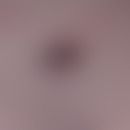Synonym(s)
HistoryThis section has been translated automatically.
Giovannini 1887
DefinitionThis section has been translated automatically.
Clinical and histological phenomenon, often a random finding, in which the papilla tip of a hair follicle splits during the Anagen phase. Thereafter, two hair shafts grow out of a single hair channel (pili gemini). Pili multigemini is a pathological follicle finding in which several hair shafts emerge from an enlarged follicleostium.
You might also be interested in
Occurrence/EpidemiologyThis section has been translated automatically.
The prevalence of this anomaly is not known, but it is certainly a phenomenon that is more often overlooked or ignored.
LocalizationThis section has been translated automatically.
In women the phenomenon usually occurs under the arms and on the legs. In men it is mainly on the face, in infants on the capillitium (Nair PA et al. 2018). Occasionally this follicular anomaly was observed over a large area of the back (Ciudad-Blanco C et al. 2014). Lee JS et al. described an analogous case with diffusely distributed pili multigemini, which impressed as small brush-like follicular hair accumulations. They postulate a form of epidermal naevus (follicular nevus).
Clinical featuresThis section has been translated automatically.
Pili gemini or multigemini can occur in any hair type and are a characteristic finding in folliculitis decalvans. They are called tufted hairs in this scarring inflammatory alopecia. These are peculiarly large-lumen widened pores from which up to 40 narrow hair bundles emerge (Lee JS et al. 2005). Such tuft hairs can also occur in Lichen planus capillitii.
Also in hair follicle nevi, pili multigemini can occur and define the nevoid process (Sperling LC et. al. 2014).
LiteratureThis section has been translated automatically.
- Ciudad-Blanco C et al.(2014) Extensive pili multigemini over the back. Int J Trichology 6:180-181.
- Lee JS et al (2005) The nevoid pili multigemini over the back. Eur J 'Dermatol 15:99-101.
- Lester L et al (2007) The prevalence of pili multigemini. Br J 'Dermatol 156:1362-1363.
- Nair PA et al (2018) A Rare Association of Pili Multigemini and Rolled Hairs in a Young Female, Title Requires a Change. Int J Trichology 10:47.
- Panchaprateep R et al.(2015) Clinical, dermoscopic, and histopathologic features of body hair disorders. J Am Acad Dermatol 72:890-900.
- Sabiq S et al. (2019) Pili Multigemini After Hair Transplantation. Dermatol Surg 45:746-749.
- Sparrow LC et al (2014) Pili multigemini/trichofolliculoma-like organoid nevus. JAAD Case Reports 71: e83-e85
Incoming links (1)
Hair shaft anomalies (overview);Disclaimer
Please ask your physician for a reliable diagnosis. This website is only meant as a reference.




